Best ICL Surgery by Top Surgeons
- Treatment for refractive errors such as Nearsightedness, Farsightedness, and Astigmatism
- Affordable ICL Surgery by Top Surgeons.
- Online consultation for treatment of refractive errors
FREE Consultation
Talk to best ICL surgeons
ICL Surgery
ICL surgery or Implantable Collamer Lens surgery is a procedure, in which a pair of artificial lenses is permanently implanted into the eyes. The lens is inserted permanently, so it does not require to be removed like normal contact lenses. These micro lenses correct refractive error for the long-term. Conditions like myopia, hyperopia, and astigmatism are treated by putting ICLs between the natural lens and iris of the eyes. This lens makes the existing lens bend the light rays towards the retina leading to the normal good vision. ICL is just like contact lenses that are permanently embedded in the eyes.
ICL is another effective surgery to correct refractive error. Like other corrective surgeries. However, it does not guarantee the complete correction of vision problems. Although, it can minimize the use of eyeglasses and contact lenses.
- No blood
- No pain
- No hospitalisation
Procedure of ICL Surgery
The procedure of ICL surgery is simple and gets done within 20 to 30 minutes. However, you will have to visit your eye doctor one week before the surgery. They will check the condition of your eyes. Then a laser will be used to make tiny holes between the front of your eye known as anterior chamber and natural lens. These holes will help in preventing pressure and fluid buildup in the eye after the surgery.
You may also get prescribed some antibiotics and anti-inflammatory eye drops which you will be using days before surgery.
The procedure will begin like-
- You will be given some local anesthesia or a sedative injection around the eye to help you relax and temporarily stop you from moving it.
- Your eyes will be held open with the help of a tool called a lid speculum. Doctor will apply a lubricant to protect the cornea.
- They will make an incision and insert the ICL through it. Now the doctor will remove the lubricant and close the opening with tiny stitches.
- Then they will put eye drops or ointment in the eye, and cover the eye with an eye patch to protect it for the time being.
- After the surgery is done, you will rest in the recovery room for a couple of hours and be monitored closely. You can go home after a few hours. You’ll have a follow-up appointment the next day.
Types Of ICL
ICL Toric lenses
The Toric ICL are used to correct ranging from -3.0 D to -23.0 D of sphere and 1.0 to 6.0 dioptre of cylinder as well. Toric ICL is able to correct nearsightedness and astigmatism in one surgery. Therefore it is recommended to the patients with both the conditions. Toric ICL has also been found safe and effective for patients who have undergone surgeries like keratoconus, corneal transplant, and patients who have thin corneas. Toric ICL can give complete freedom from eyeglasses to even those patients whose laser surgeries did not correct the refractive error completely.
Spherical ICL
The spherical ICL is used for people of age less than 40 years who have a very high eye power. When other LASIK procedures do not work because of very high refractive error or thin corneas, spherical ICLs can correct the vision. These may be used for the correction of moderate to high myopia ranging from -3 dioptre to -20 dioptre.
However, as the name suggests, spherical ICLs can be used for spherical power only. That means a person requiring cylindrical correction for astigmatism may not be eligible to get this surgery.
| ICL TORIC BLADE-LESS, STITCH-LESS | ICL SPHERICAL STITCH-LESS |
| BEST VISUAL OUTCOMES | US-FDA APPROVED |
| BEST VISUAL OUTCOMES | US-FDA APPROVED |
Signs you need ICL Surgery
All signs for Contoura Vision, LASIK, and smile are also indications of ICL as it provides high quality vision and is not tampering with the cornea. As in the case of Contoura Vision/LASIK/SMILE procedures.
Over 6,00,000 ICL’s have been implanted worldwide over the last 16 years. ICL surgery is the safest option in specs power of 8 or more. In moderate powers, they are favored when the cornea is thin if one has dry eyes and LASIK is not advisable.
If you have the following conditions, you may need ICL surgery. If you have-
- Eye power higher than 8 dioptres and up to 18 dioptres.
- Cornea weaker than 450 microns
- Cylinder power of the eye higher than 3.5 diopters
- Unhealthy cornea involving Keratoconus
- Dry eye conditions
- Any state where LASIK is not a proper option
Benefits Of ICL
Precise Vision Correction
ICL has been recognized in Europe since 1997 and in the U.S. since 2005. From that time, over 500,000 eyes have undergone ICL implantation by Specialised, certified, functional surgeons. Research displays a 99% patient satisfaction rate. In addition to that, one additionally receives the following benefits:
- Eye power higher than 8 dioptres and up to 18 dioptres.
- Cornea weaker than 450 microns
- Cylinder power of the eye higher than 3.5 diopters
- Unhealthy cornea involving Keratoconus
IOLS can be removed later
One of the most obvious concerns people have on laser-based correction is that the procedure forever changes the shape of their eye by eliminating corneal tissue. The advantage of the ICL is that it can forever correct one’s vision yet no natural tissue is eliminated or reshaped in any way through the procedure. If for some strange reason one needs or wishes to eliminate their ICLs in the future.
Do not cause ‘Dry Eyes’
ICLs are less likely to cause dry eyes as compared to other LASIK surgeries. There is no part of the eye removed. In Fact this surgery is performed on patients with dry eyes. Therefore, it causes minimal side effects.
Better Night Time Vision
ICL gives better nighttime vision than LASIK with minor complaints of haloes, distortions of light, and consciousness to bright light. Recovery is also quick because no eye tissue is removed during implantation.
Risks of ICL Surgery
Though ICL surgery is quite safe, there are some complications that you may face. Such as-
Glaucoma: Glaucoma is the increased pressure in your eye. So, if the ICL is not placed correctly it can lead to increased pressure in the eye/glaucoma.
Early cataract: ICLs increase the risk of developing cataract. Implanted lens decreases the circulation of fluid or may cause serious inflammation which increases the risk of developing cataracts.
Blurry vision: Blurry vision can be caused by some rare complications of ICL surgery. For instance, even glaucoma, cataract or an eye infection can affect your vision.
Retinal detachment: Retinal detachment may happen during the eye surgery. Although it’s rare because the success rate of this eye surgery is quite high. But if the retina gets detached from its original position, immediate attention is required.
Precautions for ICL surgery
ICL can not be performed on everyone. If you are considering corrective surgery, talk to an eye specialist to know what will work best for you.
The surgery may not be suitable for you if you-
- Are pregnant or a lactating mother
- Age is less than 21 years old
- Are above 45 years or older
- Have a disease that causes hormonal fluctuations
- Have a condition that does not allow proper wound healing
If you have any of these conditions,then you are not suitable for the ICL surgery.
Lenses Used In Surgery – EVO
Lenses Used in ICL Surgery – EVO Visian Implantable Collamer Lenses i.e. EVO Visian ICL.
At Eye Mantra Eye Centre, only the EVO Visian Implantable Collamer Lens made by Staar Surgical of Switzerland is used. EVO Visian ICLs are approved by the U.S. Food and Drug Administration. Although other manufacturers also make Implantable Collamer Lenses, the EVO Visian brand is reliable and performs very well. They are formed of collagen, a naturally occurring substance that is fit with the human body.
The EVO Visian ICL also holds an ultraviolet ray filter to shield the eyes from the damaging effects of sunlight. The latest version of the EVO Visian ICL gives the aqueous humor, the natural fluid in the eye, to flow by a hole in the lens. The flow of fluid improves the natural environment around the lens.
The lens is implanted in front of the natural lens of one’s eye right behind the iris. The micro-thin, clear lens cannot be felt and does not need any maintenance.
Cost Of ICL Surgery In Delhi
The cost of ICL surgery in Delhi itself varies from hospital to hospital. The cost of ICL surgery depends on various factors like the team of surgeons, facilities of the hospital and machines used. The ICL implants range from nearly Rs. 80,000-1,25,000 per eye . The charge of EVO Visian Implantable Collamer Lenses may appear to be high. But, when one considers that the EVO Visian ICL implant is stable, one may save money over the long term.
There is not a fixed fee for an EVO Visian lens. The price depends on one’s prescription, the doctor, and where one has the procedure done. EVO Visian ICL costs more than LASIK surgery. Prices factored into the ICL procedure involve:
- The cost of a “Spherical ICL” is Rs.50,000.
- The cost of “Toric ICL” is Rs.60,000.
- A precise exam and pre-surgical screening to assure proper fit and prescription.
- A custom-made lens of high-grade and exclusive material.
- Fees of Hospital and surgeon’s
- Post-procedure be resolute.
When one matches the costs of an implant to a pair of eyeglasses, one may spend the same or higher over a period of 10 years for the glasses. If one has a powerful prescription, they may opt for thinner lenses. Thick lenses cost even more.
When one adds UV, anti-glare and anti-scratch coatings, the cost of spectacles rises dramatically. Frames are also added to the cost. A single pair of spectacles can surely cost a lot of money. One can simply end up spending as much as the surgery over a period of 10 years.
After an ICL implant, 95 % of the patients do not require glasses or contact lenses. If one is in the 5 % of people who may require external vision aids after an ICL implant, there are methods to achieve good visual acuity. If one is over 45 years old, one requires reading glasses.
At Eye Mantra, we also provide charitable services for the “underprivileged sections of society”. Because we believe in making the world a happier place to live in.
So an individual who is in need of eye treatment, but is unable to afford the treatment expenses, can come to our hospital and his entire treatment will be done “free of cost or at a very nominal price”.
Top ICL Surgeons

Dr. Shweta

Dr. Neha

Dr. Rahul

Dr. Megha

Dr. Shubham
ICL Facilities
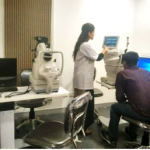
OCT
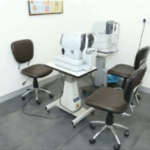
NCT Tanometer
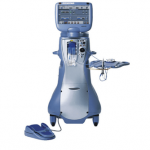
Phaco Machine
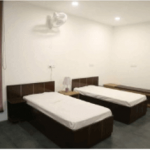
Post Operative
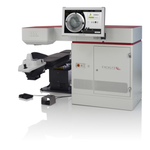
Femto Laser Cataract
FAQ's
The Visian ICL procedure is an outpatient procedure that usually takes a round of 15-20 minutes. Earlier to the procedure, one will get topical anaesthesia drops to reduce pain. Then the doctor produces a micro-opening to inject the lens into the eye with an injector.
Most doctors accept that, because ICL is a higher invasive procedure than LASIK, it must be held for patients who are not LASIK candidates. In ICL surgery, a little Collamer lens, tinier than a contact lens, is injected into the eye in front of the natural crystalline lens inside the eye.
The results of ICL surgery are estimated to be permanent. During the surgery, the natural lens will be eliminated and the latest intraocular lens will be injected. If there is no cataract formation, and no extra hard side effects, the ICL procedure is supposed to have more or less permanent results.
Yes ICL surgery provides these advantages:
- Nearly every levels of power can be handled
- Great quality of vision
- Simply eliminated or replaced in 5-15 minutes
- Quick recovery
- Cosmetically high-grade as it’s INVISIBLE!!
The ICL is different from other refractive procedures as :
- Does not cut or eliminate tissue from the cornea
- Cornea holds it a natural shape
- Durable surgery over time, no regression
- Secured for greater degrees of myopia, hyperopia, astigmatism and thin
corneas
No, maximum patients say that they are so comfortable during the
procedure. The ophthalmologist will apply a topical anaesthetic drop earlier to the procedure. Also, they may prefer to control a light sedative as well.
Nothing as such, you have to take care of a few things like using the eye drops suggested by your eye doctor several times. You will begin using eye drops 4 days before eye surgery. These drops will not harm your vision. They are used to prevent and control inflammation, infection and pain. You will also use these drops for 2 weeks after surgery. And you will also be provided with a detailed pre and post-operative instruction sheet before surgery with exact directions on how to take your eye drops.
Most normal activities can be continued within a day of surgery. In common, you should begin a normal life but avoid very difficult tasks or contact sports. Do not rub your eye and avoid swimming for 1 week after your surgery. Your ability to drive will depend on how fast your vision restores and the contrast among your eyes after the surgery.
This will depend on the kind of intraocular lenses (IOLs) used for you. The high-level intraocular lenses such as multifocal or accommodating IOLs exceedingly decrease dependency on glasses. In most cases even reading glasses can be avoided.
During cataract surgery, your surgeon will give you a local anesthetic numbing eye drops to prevent you from experiencing pain throughout your procedure. You will also be provided with a mild sedative to assist you to relax. Depending on the patient and the kind of procedure, extra medication may be used.
As the medications wear off, you may feel a scratchy sensation or slight soreness in your eye the first day. Over-the-counter pain relievers can be taken to ease discomfort. If important, your doctor will guide stronger pain medication.
During cataract surgery, your surgeon will give you a local anesthetic numbing eye drops to prevent you from experiencing pain throughout your procedure. You will also be provided with a mild sedative to assist you to relax. Depending on the patient and the kind of procedure, extra medication may be used.
As the medications wear off, you may feel a scratchy sensation or slight soreness in your eye the first day. Over-the-counter pain relievers can be done to ease discomfort. If important, your doctor will guide stronger pain medication.
No, a cataract can’t develop up again as the IOL implantation never requires maintenance and replacement. It is very rare in few patients that a cloudy film is formed behind the implant on the lens capsule membrane, normally a few months later after the surgery. This condition is named as secondary cataract.
In 20-30% of cases months later after the surgery, the posterior part of the lens capsule that is left inside the eye while surgery for security reasons becomes cloudy, causing vision to again become blurred. This is a secondary cataract. That is also called posterior capsular opacification which normally can be simply treated with a less invasive follow-up procedure called a YAG laser capsulotomy.